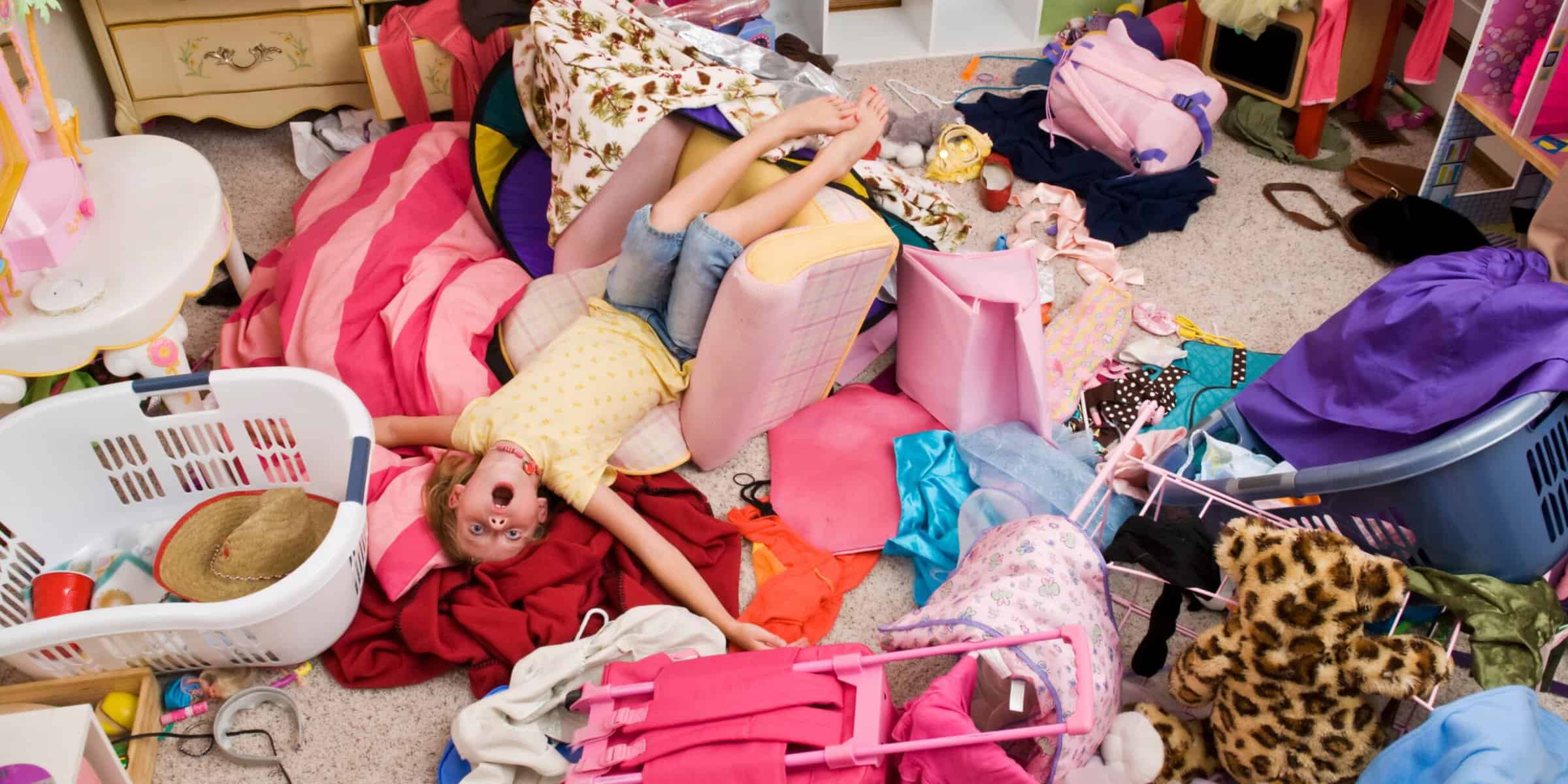Do you have an unsealed concrete floor in your home? Maybe in the basement or the patio or garage floors? My concrete flooring is in my outdoor patio slab and it’s not the easiest thing to clean! Here are my best tips on cleaning that concrete flooring.
Typically, garage and interior concrete floors are usually sealed concrete floors. This makes keeping them clean a little easier as long as you get stains up quickly. However, patios, driveways, and other outdoor concrete floors tend to be unsealed. The porous nature of unsealed concrete makes stains much more difficult to remove.
Learning how to clean unsealed concrete floors is critical to keeping these floors looking their best over the years. There are several different products that can help to remove tough stains.
You can use baking soda, TSP or Muriatic acid to clean a tough stain on your unsealed concrete flooring. If you use muriatic acid, make sure to have ammonia on hand to neutralize it after a few minutes. My favorite method is baking soda, and it works to clean almost any type of stain. Using a power washer on outside flooring is always a good idea.
How To Tell If Your Concrete Floor Is Unsealed
Cleaning unsealed concrete floors is quite different than cleaning finished, or polished concrete so it is important to know how to tell the difference. Usually it is the finish that differentiates unsealed concrete floors from sealed.
Simply pouring some water on the surface will tell you which you have. Sealed concrete will repel the water, it will run off. Unsealed concrete will absorb the water within a few minutes. See an example in this video:
How To Clean Concrete Flooring That Has Not Yet Been Sealed
If you have identified that your flooring has in fact not been sealed, then here are the cleaning instructions for you. Keep in mind that it’s best to avoid harsh chemicals when cleaning concrete floors indoors.
1) Clear The Area
The first thing you’ll want to do is move everything off the concrete flooring that you are trying to clean. This will help to ensure you do not damage your stuff while you’re cleaning, and it will help you make sure that you are cleaning the entire area properly.
2) Vacuum Loose Dirt
In order to avoid scratching your concrete flooring by rubbing dirt around, it’s a good idea to give the area a vacuum first. Make sure to get as much dust off your floor as possible.
You can sweep as well, but I do prefer to vacuum. I like my wet/dry shop vac for these kinds of jobs, but your regular home vacuum will also work. You do not need a fancy vacuum cleaner to pick up loose dirt and debris.
3) Treat Stains
Once you have all the dirt and debris off of your floor, it’s time to treat the stains. Remembering that unsealed flooring absorbs cleaners, you can start your stain treatment with a ph-neutral cleaner. I like to use baking soda, and it is also the more eco-friendly way to clean concrete.
Sprinkle baking soda over the flooring and lightly spray it with clean warm water. Do not soak the area, simply spray enough water on the baking soda so you have a paste-like consistency. Just leave it there, do not scrub. After a few minutes (try 10 aft first, then 30 if the 10 minutes didn’t work out) you can start scrubbing the stain with a scrub brush.
If your stain is extra stubborn, like dog or cat urine, feel free to use some TSP (trisodium phosphate) on the stain. TSP is a commercial cleaner that works really well on concrete because it penetrates the surface and gets deep into the pores.
As a last resort, on super stubborn stains such as grease stains, oil stains, or rust stains on the concrete surface, you can try muriatic acid. Make a cleaning solution of 1 part muriatic acid and 10 parts water and add to a spray bottle. Then spray it onto the stain and wait ten minutes. After the 10 minutes is up, neutralize the acid with an ammonia-water solution. Add 1 part ammonia to a gallon of water. Please wear protective gear if you choose this option and follow the manufactures directions.
Ammonia produces a poisonous gas that is harmful to your lungs and should only be used in well-ventilated areas. I would avoid using ammonia and muriatic acid unless you really really need that stain gone.
4) Scrub The Floor
To scrub your unsealed concrete floor, mix baking soda and water in a large bucket. 1/2 cup of baking soda will do just fine. Use a stiff brush and dip it into your bucket, but make sure you wring out as much excess water as you can before you begin scrubbing the floor. You should have a damp mop for best results.
Proceed to wash the entire floor with your not-soaking wet mop, making sure to rinse the mop as often as needed.
5) Rinse the Floor
Give the whole floor a once over with just water. This will remove any baking soda residue from your concrete flooring.
If the flooring is outside on the patio, you can power wash it with a pressure washer or rinse it off with a hose, as long as you take extra steps to dry the floor off.
6) Dry The Floor
Once you have finished washing your floors with the baking soda and water solution, proceed to dry the floor.
You can use your wet dry shop vac to dry the floors or run a dry mop along the wet spots to speed up the process. It’s ok to let the floors dry naturally, as long as they aren’t super wet to avoid damage.
What To Avoid Using On Unsealed Concrete
Bleach
First, if utilized over time, bleach might dissolve your concrete floor. Second, bleach emits chemical fumes that are harmful to your health, and you don’t want to breathe them in your basement’s enclosed room.
White Vinegar
When cleaning concrete, stay away from white vinegar and other acidic cleaners. The vinegar can dissolve the sealing finish, exposing your concrete flooring to further water damage. It can etch into the concrete and ruin the overall finish of your floor if it is not sealed.
How to Protect and Maintain Concrete Floors
Maintaining the appearance of your concrete flooring requires regular cleaning. However, if you really want to preserve your concrete in good repair, there are a few things you should do.
1) Sweep Often
The frequency of cleaning depends on traffic, however removing debris reduces the risk of damaging abrasions.
2) Mop Often
A fast moist mop once a week to target unseen stains allows you to detect stain-causing substances before they have a chance to set in.
Spills should be cleaned up immediately.
3) Clean Spills
This is particularly critical with unsealed concrete, as liquids can readily sink in. However, cleaning up liquids before they have a chance to discolor is always a good idea.
4) Fix Cracks
If you see a small crack in your concrete, don’t ignore it because you think it’s not a huge concern. Dirt can readily become stuck in these little grooves.
5) Seal Concrete
It’s a good idea to seal your concrete if it isn’t already. Over time, this will make it more resistant to water and abrasion damage.
6) Use Dehumidifier
If you’re always dealing with moisture-related stains like white efflorescence stains, it’s a sign that your concrete is being attacked by too much moisture. To alleviate the problem, get a dehumidifier.
FAQ
How Do You Clean An Unsealed Concrete Basement Floor?
To clean an unsealed basement floor you’ll want to move any furniture out of the way, vacuum the area, and use a baking soda and water solution to mop the floors. Remember the dry the floor properly.
What Is The Best Concrete Floor Cleaner?
Baking soda is the best concrete floor cleaner, but you can use anything that has a neutral PH balance. TSP is another great option for tough stains.
What Kills Mold On Concrete Floors?
If you are dealing with mold on your concrete flooring you may want to use castile soap, dish soap, or lye soap on the stained area.
Can I Mop A Basement Concrete Floor?
Yes you can mop the basement floor, just make sure you are not using an extremely wet mop.
Can I Pressure Wash A Concrete Floor?
If your concrete floor is sealed, you can pressure wash the flooring.
How To Clean Unsealed Concrete Floors Bottom Line
It might be difficult to figure out how to clean concrete in a way that is convenient for you, and certain stains are more difficult to remove than others.
If your concrete surfaces aren’t sealed, the suggestions above should suffice to restore them to their former glory. Make sure to seal those concrete surfaces once they’ve been cleaned. Sealing the pores will help to keep dirt, filth, and grease out, making maintenance easier.
More Like this
- How Often Should You Clean Your Floors
- Cleaning Hacks To Remove Dog Urine Stains From Concrete
- How to clean vinyl floors the right way
- How to remove urine stains from concrete

Grainne Foley
Grainne Foley is a wife and mother of 2 great kids. During her 5 years of full time RV travel, Grainne learned to become very efficient at household chores, in order to make time for family adventures. Now, back in a house, she has continued to create tools and techniques to help others lighten the load of household organization and cleaning.





Leave a Reply